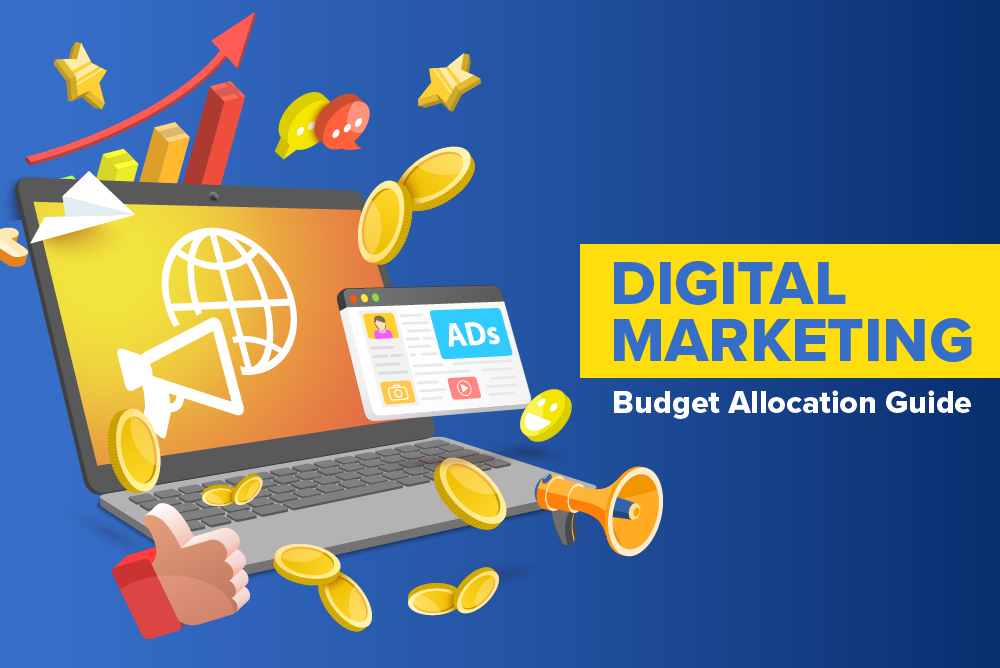In digital marketing, where brands compete for attention through online content, copywriting creates a lasting impact, driving engagement and converting browsers into loyal customers. That’s why marketers use a well-crafted copy in every successful marketing campaign to transform mere words into winning marketing strategies. This valuable skill does not only involve putting words together; it requires a complete understanding of audience psychology, a mastery of language, and the strategic deployment of both to achieve specific business objectives.
Effective copywriting, therefore, involves creativity and analytical precision, representing both an art and a science. As an art, it demands creativity, intuition, and empathy to relate deeply with readers, creating emotions that inspire action. As a science, it depends on proven methods, psychological insights, and data-driven strategies to produce messages that captivate and convert. This balance between creative vision and practical strategy defines the nature of copywriting, making it a crucial component of any marketing approach.
This blog further looks into the core principles that drive effective copywriting. From understanding your audience and crafting compelling narratives to optimising content for search engines and measuring the impact of your words, you will learn how to harness the power of copywriting to elevate your marketing efforts.
Understanding Copywriting Fundamentals

Copywriting is creating persuasive marketing and promotional materials that motivate people to take action, such as making a purchase, clicking on a link, or subscribing to a service. It is crucial in any business marketing strategy, acting as the voice communicating directly to the audience.
While often seen as a standalone practice, copywriting involves various types, each having distinct objectives. SEO copywriting focuses on optimising content to rank higher in search engine results, thereby increasing visibility and traffic. On the other hand, sales copywriting aims to directly influence a purchase decision through compelling calls-to-action and persuasive sales arguments. Web content copywriting involves creating informational content for websites, balancing the informative with the engaging to retain visitor interest and support SEO efforts.
Besides knowing the types, understanding your audience and the value that you offer is also important in copywriting. Knowing your audience allows you to enhance your message with their specific needs, desires, and pain points, making the communication more effective and personal. Additionally, a strong marketing value proposition, which explains how a product or service solves a customer’s problem or improves their situation, is essential for distinguishing a brand from its competitors.
The Elements of Compelling Copy

The potential of copywriting lies in its ability to communicate a message effectively and compellingly. A successful copy has four pivotal elements: clarity, conciseness, persuasion, and a strong call-to-action (CTA).
Clarity ensures the message is understandable and straightforward, eliminating any confusion that might deter the reader’s journey. Conciseness respects the reader’s time by delivering the message with brevity, making every word count towards the overall goal. Persuasion is about influencing the reader’s mindset, twisting facts, emotions, and logic into a narrative that aligns with their interests and desires. Lastly, the CTA serves as the central point, guiding the reader towards a desired action with clarity and urgency.
To create attention-grabbing headlines for effective copywriting, start with a value proposition or a compelling question that speaks directly to the reader’s curiosity or needs. The headline should promise them a benefit or solution that is too exciting to skip.
Following this, engaging introductions should hook the reader with a compelling fact, a relatable problem, or a narrative that draws them deeper into the text. Combining these elements with the principles of effective copywriting, you create a powerful medium for your marketing message, ensuring it reaches and resonates with your intended audience.
Writing for Your Target Audience

Copywriting for your target audience begins with a deep understanding of who they are, including their needs, pain points, and desires. Techniques for identifying your audience include analysing customer data, engaging with them on social media, and conducting surveys and interviews. This research enables you to create buyer profiles, and detailed representations of your ideal customers, which guide your marketing efforts.
Once you have a clear picture of your target audience, the next step in your marketing strategy is to refine your language, tone, and messaging to resonate with them. Use precise language and industry-specific jargon for professional and technical audiences. For a more general audience, follow a conversational tone in your copywriting that simplifies complex ideas. Additionally, emotional appeal is powerful; thus, your messaging should empathise with the audience’s challenges and aspirations, demonstrating how your product or service can address their pain points and fulfil their desires.
SEO Copywriting Basics

SEO copywriting is a specialised form of marketing that helps websites become more visible to search engines, improving their ranking in search results. This visibility is essential for attracting traffic and engaging with a wider audience online. SEO copywriting involves creating content that not only appeals to readers but also adheres to the criteria set by search engines, making it a delicate balance between readability and optimisation.
A fundamental aspect of SEO copywriting is SEO keyword research, which identifies the terms and phrases used when searching for products or services online. Tools like Google Keyword Planner and SEMrush can provide details about popular and relevant keywords in your niche. Once identified, the next step is using these keywords naturally into your copy, enhancing the reader’s experience and increasing the chances of conversion.
To achieve this, keywords should be put into titles, headings, meta descriptions, and the body of the text in a contextually relevant manner. It’s also important to use variations and long-tail keywords to capture a broader range of search queries. By providing value and ensuring readability, you can create SEO-friendly copy that ranks well and resonates with your audience.
The Power of Storytelling in Copywriting

Storytelling in copywriting can build emotional connections with the audience, making the message heard and felt. Stories tap into our natural ability to seek deeper meanings in everything we encounter, transforming plain facts and features into compelling narratives of challenge, triumph, and transformation. Therefore, when a brand’s message is incorporated within a story, it becomes more memorable, enhancing message retention.
One effective storytelling technique in copywriting is the classic ‘hero’s journey’ narrative structure, where the customer is positioned as the hero overcoming obstacles with the help of your product or service. Another marketing technique is ‘painting a picture,’ which involves clearly describing a scenario that the target audience looks forward to or wants to avoid, thus evoking strong emotions and desires. Additionally, including testimonials or customer success stories can lend authenticity and relatability to your message, showcasing real-life applications and outcomes of your offering.
By leveraging these storytelling techniques, copywriters can craft content that informs, persuades and resonates deeply, establishing a lasting connection with the audience.
Conversion-Focused Copywriting Strategies
Conversion-focused copywriting is all about turning readers into customers by using strategic, persuasive techniques that encourage action. Key strategies include using social proof, which takes advantage of others’ actions and testimonials to build trust and credibility. Featuring customer reviews, endorsements from experts, or statistics on product success can significantly enhance the influencing power of your copy, making potential customers more likely to convert by seeing others’ positive experiences.
Another important component of conversion-focused copywriting is creating effective CTAs. A compelling CTA is clear, urgent, and resonates with the reader’s desire to gain a benefit or solve a problem. It should stand out visually and be placed strategically within the content where it feels like a natural next step for the reader. Use action-oriented language that creates a sense of urgency or exclusivity, such as “Join now and start saving,” or “Offer ends soon — act now!” By clearly telling readers what they gain by taking action and making it easy to do so, CTAs can dramatically increase the chances of conversion.
Common Copywriting Mistakes to Avoid

Copywriting involves more than just writing compelling content; it also requires avoiding common pitfalls that can distract from your efforts. One common mistake is neglecting the audience’s perspective. Copywriters must deeply understand their audience’s needs, preferences, and pain points to create resonant messages. Ignoring this can result in content that fails to engage or motivate the target readers.
Another frequent mistake you can make in your marketing strategy is complicating the message. Effective copywriting should convey ideas clearly and concisely. Using overly complex language or technical jargon that confuses readers can distract from the message’s effectiveness. Therefore, keep your copy simple for better understanding and retention, making it easier for the audience to connect with the content.
Additionally, many copywriters follow feature-focused writing rather than highlighting benefits. Customers are most interested in how a product or service can solve their problems or improve their lives, not necessarily the intricate details of the features.
Finally, a lack of strong CTAs can impact conversion rates. CTAs guide readers on what to do next, but without giving clear instructions, the interest generated by compelling copywriting can easily be lost. To maximise impact, ensure each piece of copy not only informs and persuades but also directs readers towards the next step.
Tools and Resources for Copywriters

For copywriters who want to refine their copywriting and expand their toolkit, several digital marketing resources and SEO tools are available for different parts of writing and marketing. A few essential tools include Grammarly for grammar and style checking, ensuring your copy is error-free and polished. Hemingway Editor is another invaluable tool that helps simplify and clarify your writing, making it more accessible and engaging.
For keyword research and SEO optimisation, tools like Ahrefs and SEMrush offer comprehensive features that can help you understand search trends and optimise your content for better visibility. CoSchedule’s Headline Analyzer is a tool for creating compelling headlines that attract more clicks and drive engagement through copywriting.
Books also serve as fundamental resources for copywriting. “Everybody Writes” by Ann Handley is a must-read for its practical advice on producing outstanding content. “Made to Stick” by Chip and Dan Heath explores why some ideas thrive while others die, offering insightful marketing tips on making your copy more effective.
Additionally, online courses from platforms like Coursera, such as copywriting courses or SEO courses, offer targeted learning paths in copywriting and digital marketing, providing foundational knowledge and advanced techniques.
Unlock Your Copywriting Potential with First Page

Mastering copywriting is a continuous journey that requires persistence, creativity, and a deep understanding of marketing principles. By applying the right copywriting concepts, from improving your storytelling skills to enhancing your SEO strategies, you can significantly enhance the impact of your writing. Remember, effective copywriting is not just about selling a product or service; it’s about creating meaningful connections with your audience and delivering value that resonates on a deeper level.
If you are looking for an ideal partner to enhance your copywriting and digital marketing efforts, consider partnering with First Page, a leading digital marketing company based in Singapore. We offer a range of digital marketing services tailored to boost your online presence. Whether you need compelling copywriting, strategic content writing, or advanced SEO solutions, we have the expertise to help you succeed.
Take the next step in your digital marketing journey and contact First Page today to discover how our copywriting services can transform your business’s online engagement and growth.

















